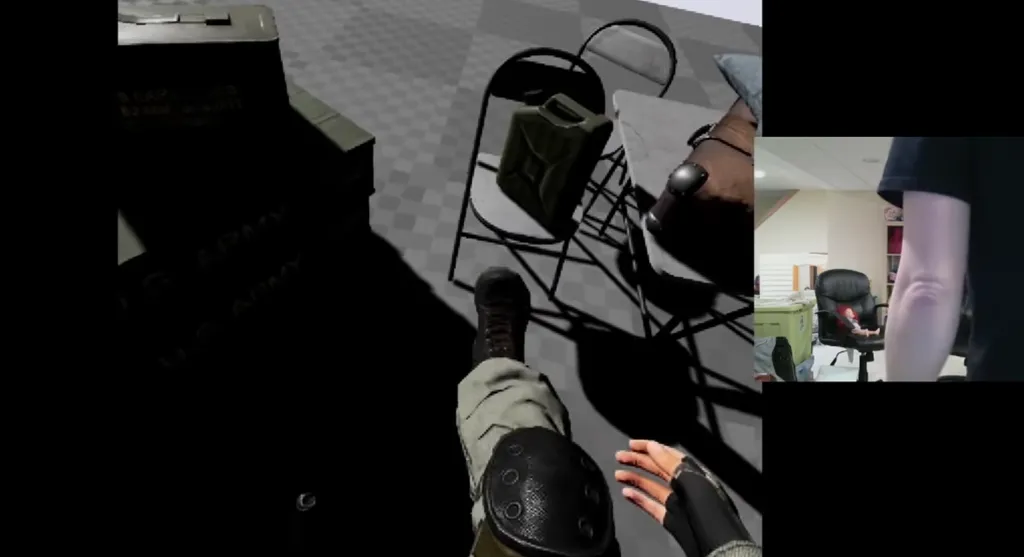From fire fighting simulators to local multiplayer shooters, developers are already getting inventive with the HTC Vive’s new Trackers, and now the creators of Island 359 have something impressive of their own to show off.
CloudGate Studio this week posted a video demonstration of its ‘Fullbody Awareness’ experiments in VR. The system brings a player’s entire body into the virtual realm, in this first test using four Vive controllers. Two are held in hand as per usual and another two are taped to President and Co-Founder Steve Bowler’s feet as he walks through the demo. Such a system wouldn’t be viable for consumers but, as Bowler points out on Twitter, replacing the bottom controllers with the Trackers may yield interesting results.
Still, what’s here right now is impressive. Using the system the developers were able to create what Bowler describes as “a pretty good facsimile of a human body in VR”. That includes torso, legs and arms, and not just the floating body parts we’re used to seeing in so many VR experiences right now. While not perfect, Bowler is able to accurately replicate a wide range of motions in VR like lifitng a leg up and even touching his toes.
The developers are even able to portray the player’s shadow within VR, and Bowler puts it to the test by dancing around before he starts to kick items in the virtual world. He also mentions that a third Tracker could be placed around the hips to more accurately track crouching, which he describes as “pretty good” in its current form but ultimately just “guessing”.
@nuclearfossil it’s a “hack” using two Vives so we could get 4 wireless controllers. Now that it’s proven will move to Vive Trackers later.
— Steve Bowler (@gameism) January 20, 2017
“Think about what this would look like for multiplayer, for social aspects, for everything, right?” Bowler says as he stares down at his virtual self.
It is an enticing thought, remdinding us of the Perception Neuron MOCAP system to an extent, which places multiple markers around the user’s body. The Vive trackers aren’t exactly designed to be worn on a user’s feet, though, so we do question just how useful this solution could ultimately be.
Bowler, however, doesn’t seem to be phased. Over on Twitter he suggested that the company might have “a plan”, possibly for special shoes that would fit the Trackers. “It’s easier than you think,” he said.
@marmalade_tim @CloudGateStudio As soon as we can. We have a uh, we have a plan there. It’s easier than you think.
— Steve Bowler (@gameism) January 20, 2017
It’s certainly an option developers could start to provide to VR enthusiasts once the trackers start shipping in Q2 2017. Would you strap three extra Trackers to your body to fully dive into VR?

























